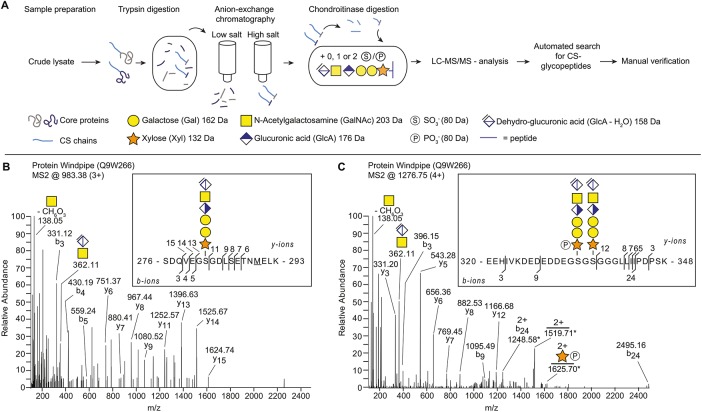FIGURE 1:
Identification of Wdp as a novel CSPG in Drosophila. (A) Scheme for identifying CSPGs in Drosophila. The workflow includes the enrichment of proteoglycans from fly extract, enzymatic hydrolysis and subsequent analysis, and interpretation of mass spectra. (B, C) MS2 fragment mass spectra of Wdp protein (UniProt: Q9W266) showing two unique CS linkage region-substituted glycopeptides. (B) Peptide (SDQVEGSGDLSETNMELK) identified with one hexasaccharide structure and one methionine oxidation (m/z 983.38; 3+). (C) Peptide (EEHIVKDEDEDDEGSGSGGGLLIIPDPSK) identified with two hexasaccharide structures where one of the xyloses was modified with one phosphate (m/z 1276.75; 4+). This spectrum contains doubly charged fragments at m/z 1248.58; 2+, m/z 1519.71; 2+ and 1625.70; 2+, for which the second isotopic peak represents the largest peak of the isotopic distribution. For these doubly charged fragments, the masses of the second isotopic peaks are annotated and are denoted with an asterisk. All other annotated ions in B and C are from monoisotopic masses.

